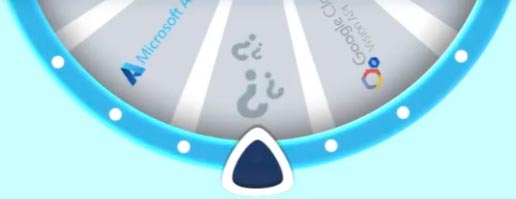[00:00:04.490]
Bad actors are smart, and they’ve found ways to exploit graphical elements in phishing attacks so their victims trust what they see. Here are the most commonly exploited graphical elements and how Visual-AI identifies their misuse.
[00:00:19.600]
What better way to inspire confidence and build trust than including a brand logo in fake emails, documents and websites? Bad actors know this, but they also know that using slightly modified or outdated logos can fool many phishing detection systems.
[00:00:37.650]
Scammers also use recognized and authoritative marks to increase trust. Clever use of a padlock icon, along with a made up browse safe icon will fool many people to give up their data.
[00:00:51.690]
Favicons have also become key to building trust in a website. Indeed, some people even think they indicate that a site is secure.
[00:01:01.110]
But it’s not just about building trust. Bad actors also manipulate graphics in ingenious ways to avoid detection.
[00:01:09.930]
Bad actors will split key images into many small parts and reassemble them during the final render, as well as adding noise to the code. It also masks the true identity of the image they have split if basic HTML scanning is done.
[00:01:25.890]
Is there a word that’s triggering detection? No problem, they just convert it to an image.
[00:01:32.860]
Bad actors will also convert an entire form and overlay the input fields above the form graphic.
[00:01:40.890]
The same goes for URLs, where they’ll show you what looks like a genuine URL as a graphic, but behind it is a fake URL, which when clicked, will drop you on a spoofed site.
[00:01:54.090]
In extreme cases, they can even convert everything on a screen to a graphic, leaving nothing for detection systems to see.
[00:02:03.090]
Visual-AI provides a new way to detect and block phishing emails and websites.
[00:02:09.990]
Visual-AI sees all content with human eyes, but at machine speed, so it’s fast and bad actors can’t avoid it.
[00:02:18.950]
It delivers super-effective phishing detection in three simple steps.
[00:02:24.390]
Step one, render the web page or email, save it as a flattened image and send it to our engine for processing.
[00:02:32.670]
Step two, high risk elements or attributes are identified and flagged.
[00:02:38.850]
Step three, a risk score is calculated and passed with the identified anomalies back to the master fishing detection system for final actions, and all this happens in a second or less.
[00:02:52.170]
You too could harness the power, speed and accuracy of Visual-AI in your phishing detection platform. Test it today and see how Visual-AI could enhance your platform.


